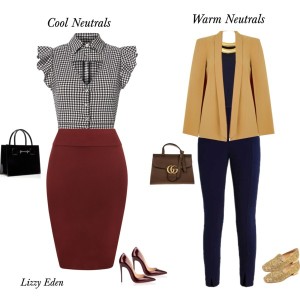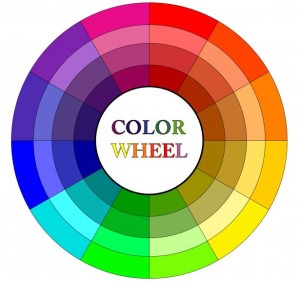Let’s look at neutrals and what they are in more depth.
Neutrals are generally defined as colours that are not found on the colour wheel, and not given a rainbow hue name such as violet, blue, green, yellow, red or orange. Neutrals, therefore would be grey, black, navy, white, tan, brown, camel, cream, olive etc. Neutrals are considered to be the ‘non-colours’. They’re created by being achromatic which is the absence of colour, for example, black, grey and white or a mixture of lots of colours together until any rainbow hue has no distinguishable colour present.
There are three ways in order for a colour to become a neutral
1. Adding grey which is called toning.
Adding lots of grey to a colour (toning) will cause the hue to become very muted, dusky and greyed down, hence, a lot less obvious. Neutrals such as khaki, denim, camel and cognac fall into this category.
2. Adding black which is called shading.
Adding lots of black to a colour (shading) will cause the hue to become very deep/dark and much less obvious also.
Many of the very dark colours we find or heavily greyed down ones (toned) such as navy, deep olive, deep burgundy and deep aubergine are considered neutrals as it’s hard to distinguish the original perceived colour and great to have in your wardrobe.
*Lighter, brighter rainbow/colour wheel hues are not neutrals.
3. Mixing complimentary colours (colours opposite on the colour wheel) together until you get a neutral – yellow and violet, blue and orange and red and green. A better result is achieved by gradually adding a small amount of the primary colour (yellow, blue or red) to it’s complimentary and the secondary colours (violet, orange or green) The chroma, purity or intensity of the secondary colour is diminished and more ‘forgettable’ as you add small amounts of the primary hue.
We see thousands of different neutral coloured clothes with every season. Keep in mind some have a cool undertone while others have a warm undertone. This is still important for a radiant glow to your complexion.
Warm neutrals tend to be: khaki, olive, camel, cream, warm brown, and tan.
Cool neutrals will be grey, black, navy, dark chocolate, white & rose beige.







